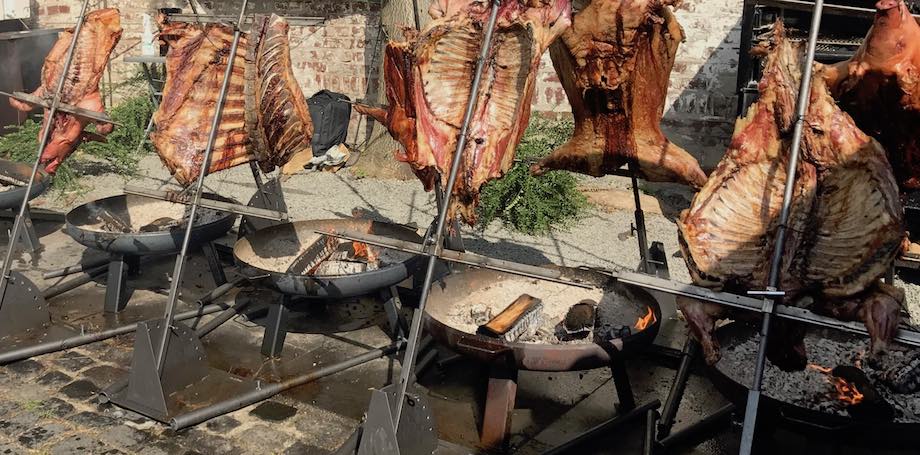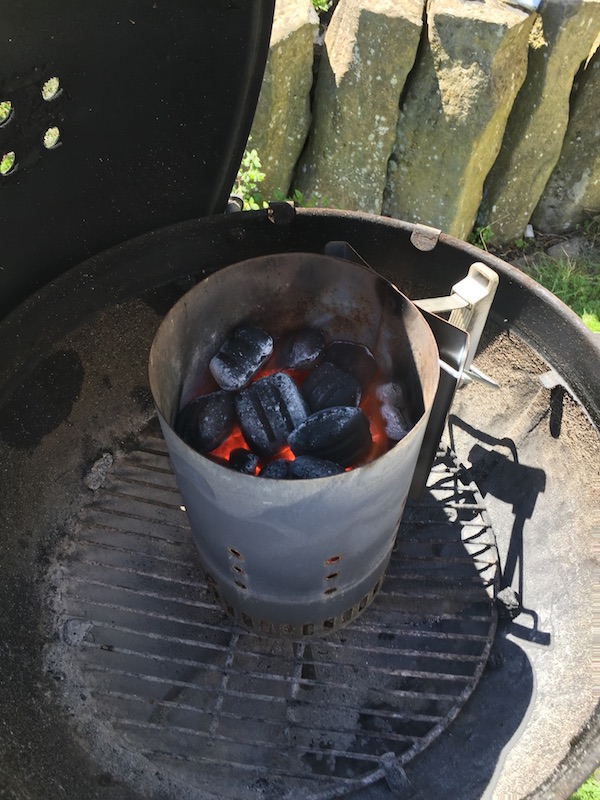When the rays of spring’s sun melt the snow, grill enthusiasts eagerly anticipate the upcoming grilling season. It’s a time to indulge family, neighbors, and friends with freshly grilled delicacies. Yet, to achieve this, one needs the right grill, preferably one crafted by hand. The costs for such a project can be quite manageable. Building a grill isn’t as challenging as you might think. The best part? Crafting your grill allows for customization to your exact preferences.
Choosing the type of grill to build is the initial step, considering the available space. Whether it’s a balcony, terrace, or a spacious garden, there are various options to explore when constructing a grill:
Building the simplest grill: the Swivel Grill

The Swivel Grill stands out as the easiest option for a DIY grill. It’s incredibly flexible too, made from easily dismantled aluminum rods. This grill can be disassembled for trips to the lakeside with family. To construct this grill, basic tools are needed:
Saw
Screwdriver
Pliers
Clamps
Building the Swivel Grill is straightforward. It involves interlocking aluminum tubes of different widths, bonded together. The process entails creating three 12-millimeter thick rods forming the grill’s legs converging into a headpiece. The headpiece comprises three thinner rods leading into a shorter tube of approximately 25 millimeters in diameter, with ends extending about 100 millimeters beyond the shorter tube, facilitating easy leg insertion during assembly.
Either a two-component or hot glue can be used as an adhesive, filling all gaps in the tubes. Securing the rods with tape and clamps, the adhesive takes around two to five minutes to dry at room temperature. The ends of the tubes are then bent outwards using a screwdriver. The angle of the bend depends on the size of the grill grate.
Finally, screw the hook that holds the chain of the grill grate into the adhesive. Three small hooks are needed to attach the chain to the grill grate. All materials required for this grill can be found in hardware stores, including complete sets with a fire pit or grill grate.
Building a Grill Cart: a spacious grilling option
For those needing ample grilling space, a grill cart is a suitable choice. Additionally, this grill type offers easy cleaning. Besides the stainless-steel grill, basic tools required for construction include:
Drill
Cordless screwdriver
Hacksaw
Chisel
Router
The design of a grill cart is minimalistic, allowing seamless integration into various settings. Precise work is crucial, especially concerning the aluminum round bars. These bars are clamped into a machine vise, marked, drilled with a 10-millimeter hole, ensuring the inner wall isn’t damaged. Two smaller holes, corresponding to the 10-millimeter holes, accommodate screws securing the aluminum rods. This structure is then inserted into the cart’s body, allowing easy pulling out for shelf placement, convenient in confined spaces.
Building a barbecue in the form of a barbecue fireplace
A barbecue fireplace offers you numerous advantages compared to a mobile barbecue. For example, you don’t need to store it somewhere else in winter because it can be left outside all year round. What’s more, smoke and fumes are dissipated cleanly and reliably and it provides free waste heat until late at night on cooler evenings. And even periods of bad weather or frost cannot harm a solid barbecue fireplace made of stone.
Do it all yourself or build a kit?
If you are not very handy, specialist retailers offer a wide range of kits for barbecue fireplaces. These can usually be assembled by absolute amateurs without any problems. The kits usually consist of just a few components that are easy to assemble. If you opt for this option, however, you must ensure that you use fireproof mortar, which may not be included in the kit.
If, on the other hand, you want to build the barbecue fireplace completely yourself, you should use solid bricks made of clinker or paving bricks. The difference to the kit is that you do not brick up the combustion chamber or the flue. Instead, you use an exposed metal grate, which is why you don’t need refractory mortar. You should also remember to lay a strip foundation for the barbecue fireplace, as the patio surface or a sand bed will not be sufficient as a base.
When the barbecue chimney needs to be repaired
If you use your brick barbecue fireplace intensively, it is quite possible that the cladding in the firebox will become loose or cracked. But don’t worry. You can also do this yourself. However, because barbecues generate high temperatures, you must ensure that you only use heat-resistant materials that are specially designed for this purpose. This includes refractory mortar, for example, which is heat-resistant up to a temperature of around 1,000 degrees.
A special variant: the brick barbecue

If you brick the barbecue yourself, you can create a very individual barbecue and fire pit that will make a real showpiece in your garden. Of course, the brick barbecue must also stand on a stable foundation, and you should also ensure that you only use heat-resistant bricks when building the barbecue. Clinker bricks and bricks are ideal, for example, and you shouldn’t forget the fireproof mortar either. The size of the brick barbecue depends solely on the type of grill grate you choose.
Important: Before you start building the barbecue, you first need to find the right location. You can’t change it afterwards once the barbecue is in place. Once you have found the ideal place for the barbecue, you now need to create a stable base. For a brick-built barbecue, you need a 10 cm thick concrete foundation laid on gravel, as the stones used are relatively heavy and there is a risk that the barbecue could sink one day. Instead of pouring your own foundation, you can also use a solid base plate or a robust terrace (not a wooden floor!) as a location for the barbecue.
Which grill grates are used?
For the brick barbecue, you generally use triangular grates that are fixed in the barbecue across the corner. For these, you screw at least three steel support rails to each wall of the triangle, each at the same height. Two of these rails serve as a support for the grill grate, the other two are intended for the perforated charcoal tray and the drip tray in which the ash is collected. If you would prefer to have a height-adjustable grill, you will need to fit more support rails accordingly.
If you want to build an additional storage surface, the simplest solution is a second wall that you raise behind a wall of the barbecue. If you attach a steel plate to it, you can conveniently place both the food and the barbecue tools on it. If you leave a little space between the two walls, you can also easily store a bag of charcoal in this gap so that it is not in the way during everyday use and is also protected from the weather.
The E-shaped barbecue variant
If you have enough space available and want to use a large grill grate, you can of course also build the grill larger. Here, for example, you have the following option:
Viewed from above, this barbecue looks like an “E”. In one of the open spaces between the walls is the barbecue grid with storage areas, in the other space between the walls is a storage area with two or more boards. Build a counter around the wall so that your guests can also eat at it. If you want more barbecue space, you can also dispense with the storage area and install a second barbecue grid instead. When the barbecue is not in use, you can simply place a board on the grill to create a storage surface.
Alternatively, you can also build the barbecue in an S-shape. Because you can grill directly on two sides, this variant is ideal if you want to serve several guests. If you only need one grilling surface, you can cover the second one with a board and create additional storage space.
Build a gabion barbecue and create a modern gem for the garden
A stylish gabion barbecue is quite easy to build: All you need for the version with a gas barbecue is plywood that is around 18 millimetres thick and has a weatherproof coating to cut shelves and bases from. You will also need a stainless steel barbecue, natural stones and gabions, i.e. galvanized wire mesh baskets.
For reasons of stability, you should double the base plates of the gas cylinder and barbecue and then place them on the foundation. You should only fill the gabions with frost-resistant stones such as sand-lime brick, granite, basalt or glass bricks. Just make sure that the stones are larger than the mesh. To make the gabion barbecue the visual highlight of your garden, you need to stack the natural stones neatly at the visible edges, while the inside can simply be piled up. The same procedure applies if you want to fire the gabion barbecue with charcoal.
Modular barbecue kitchen: why not cook in the garden?
A modular barbecue kitchen allows you to considerably increase your living space and cook and entertain your guests in the garden during the summer months. You can even build the garden kitchen yourself if you have a bit of manual skill. In this case, however, it is advisable to buy individual elements such as the sink and barbecue prefabricated and concentrate on building the cladding and shelves. For this project, you will of course need a detailed construction plan with a sketch in advance.
The materials themselves, such as suitable boards and galvanized fittings, can then be found in any well-stocked DIY store. However, you should buy the grill and other fixed kitchen elements first so that you can adjust the cladding accordingly.